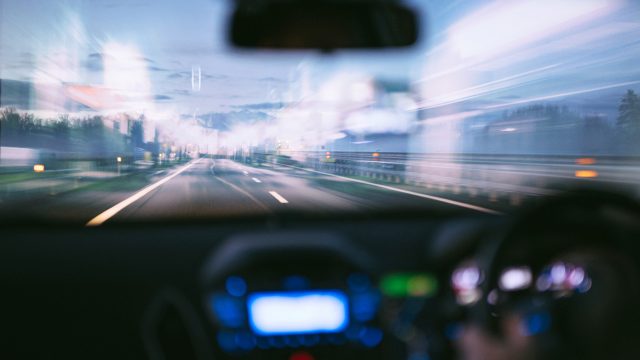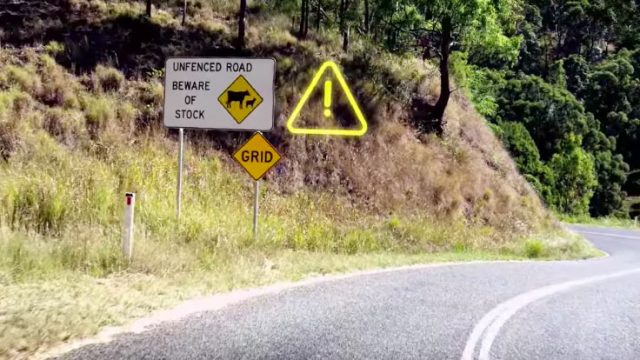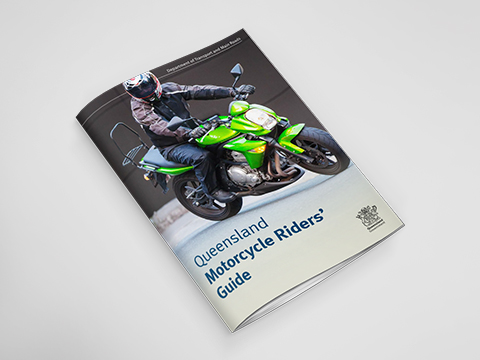
Did you know?
- Motorcycles make up around 1 in every 20 vehicles registered in Queensland.
- The road camber can help you to anticipate the nature of the curve. Camber is the difference in height between the centre and outside of the lane and can be positive or negative. Most Queensland roads have a crown camber, the middle of the road is higher than the edges to assist water runoff.
- Lane filtering, or riding at low speeds (30 km/h or less) between stationary or slow-moving traffic, is allowed if safe and the rider has an open licence with certain restrictions. Edge filtering, or riding at low speeds on road shoulders or emergency lanes, is also allowed if safe and the rider has an open licence with specific limitations.
Rules for riders
Road rules are developed for your safety. Make sure you know and follow these rules at all times.

Keeping left
For riders on single-lane roads, the rule of staying near the left side doesn’t apply. Lane positioning is crucial for your safety, permitting you to legally use any part of the lane.

Helmet compliance
All Queensland motorcycle riders and their passengers must wear a helmet that complies with Australian standards (AS/NZS1698, ECE Standard 22.05 or AS1698).

Pillion passengers
A motorcycle passenger is called a pillion passenger. You must be holding a R provisional or open licence or at least one year to carry a passenger. You must hold an RE provisional or open licence for at least one year before you can carry a pillion passenger. You can carry a pillion passenger as soon as you get your R licence.

Parking
When parking you should position the motorcycle so at least one wheel is as close as possible to the kerb or side of the road.

Motorcycle control
You must stay in control of your motorcycle at all times. That means sitting with a leg on each side. Only adjust your leg position or raise yourself if needed.

Lane filtering
Lane filtering is allowed when travelling at 30km/h or slower and when it’s safe to do so. Fines of more than $500 may apply if lane filtering is done improperly.

Edge filtering
If you hold an open licence for the motorcycle you are riding, you can ride on road shoulders and in emergency stopping lanes on major roads during certain circumstances at 30km/h or less.

Safety gear
Riding without safety gear is a risk never worth taking. Whether you’re going for a short ride or a long trip, you must always protect yourself. Check out MotoCAP to help you choose the safest purpose-made riding gear which suits you.

Improve visibility
Dress to be seen by choosing gear that maximises your visibility — wear light or brightly coloured clothing, a fluorescent vest, or use reflective strips.
To find out more about individual motorcyclist rules and penalties visit the Department of Transport and Main Roads website.
6 common causes of motorcycle crashes
There are many different risk factors and causes for crashes.
Speed
The faster you go, the harder you hit. And on a bike, you’ll always come off second-best. The only thing speeding gets you closer to is a crash.

Alcohol
Even small amounts of alcohol can affect your riding ability. If you’ve had a few drinks, don’t get on the bike in the first place.

Drugs
Drugs dull your senses, impair your judgement and delay your reaction time. If you plan on taking drugs, don’t take the handlebars.

Distractions
At 80km/h you travel 44m in just 2 seconds, so stay focused and leave time and space to react.

Fatigue
Riding tired affects reaction times and impairs judgement. Take a break or don’t get on the bike if you’re tired.

Gear and maintenance
Look after yourself and look after your bike. The right gear and regular maintenance can save your life.
Motorcycles quick quiz
Know your stuff? Take this quiz and test your knowledge on all things Motorcycle safety.



